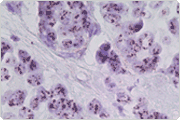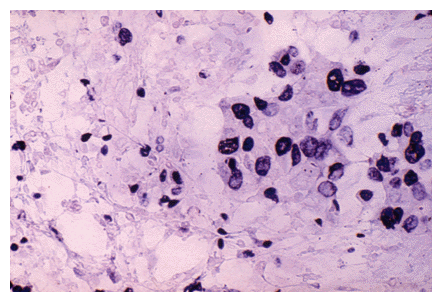
InSitupedia
CISH is a cytogenetic technique that combines the chromogenic signal detection method of immunohistochemistry (IHC) with in situ hybridization (2000).
It is an alternative to FISH used to detect the presence or absence of specific regions of DNA, allowing to measure DNA amplification.
CISH is performed using indirect labelling, in which antibodies or streptavidin are conjugated to enzymes such as HRP or alkaline phosphatase.
CISH is much cheaper and is easier then FISH because it uses bright-field microscopes,
CISH reagents are more stable (is possible to store the samples and examine the same sample multiple times), does not need high-resolution digital camera.
CISH is used for:
-
Gene amplification
-
Detection of chromosomal rearrangements and fusions
-
Detecting human papillomavirus infections.
CISH: a viable alternative to FISH in the HER2 testing algorithm


SISH is similar to CISH, but a silver precipitate is the end product.
Silver metal is consequently deposited into the nuclei of the cell.
In Situ Hybridization with Nanogold®-Streptavidin
SISH For Determination of HER2 Gene Status in Breast Carcinoma: Comparison With FISH and Assessment of Interobserver Reproducibility

DuoCISH is a variation of CISH that addresses the need for two different probes.
Combines both FISH and CISH in that it converts signals from FISH probes to chromogenic substrates.
An advantage of DuoCISH is that it is possible to distinguish between chromosomal aneuploidy and gene amplification.
